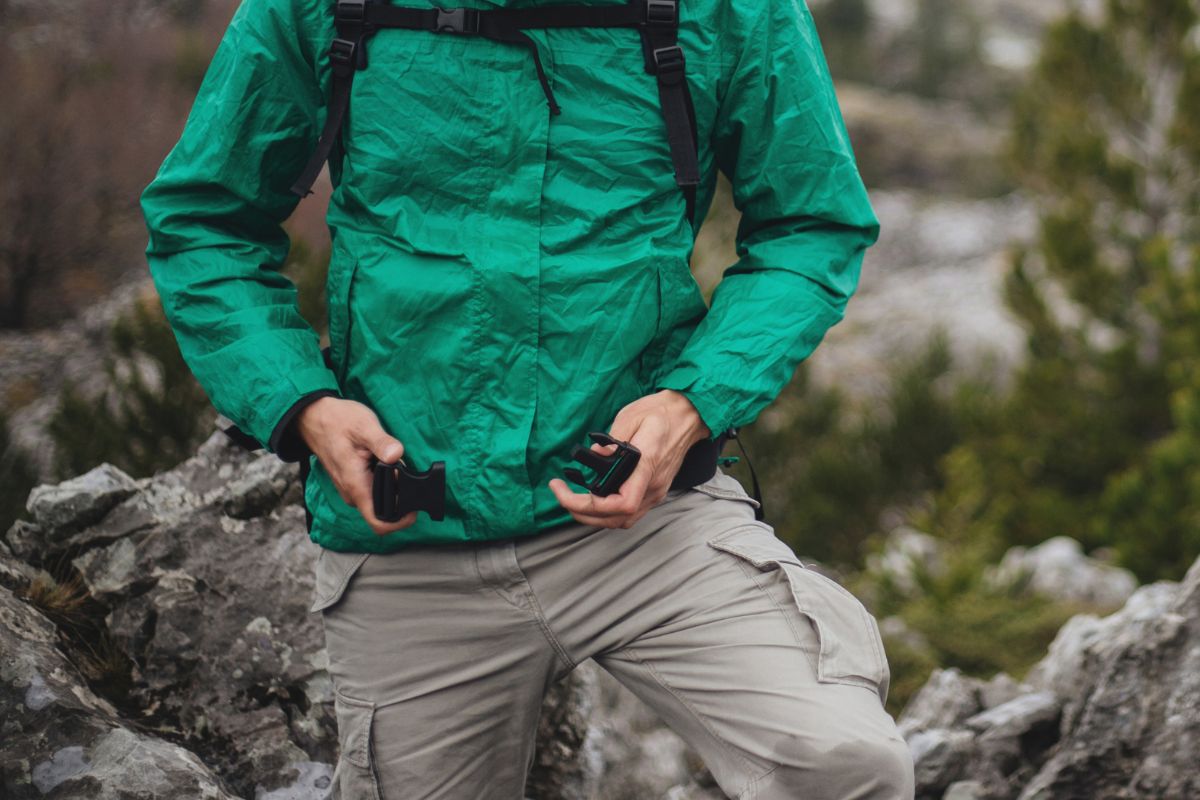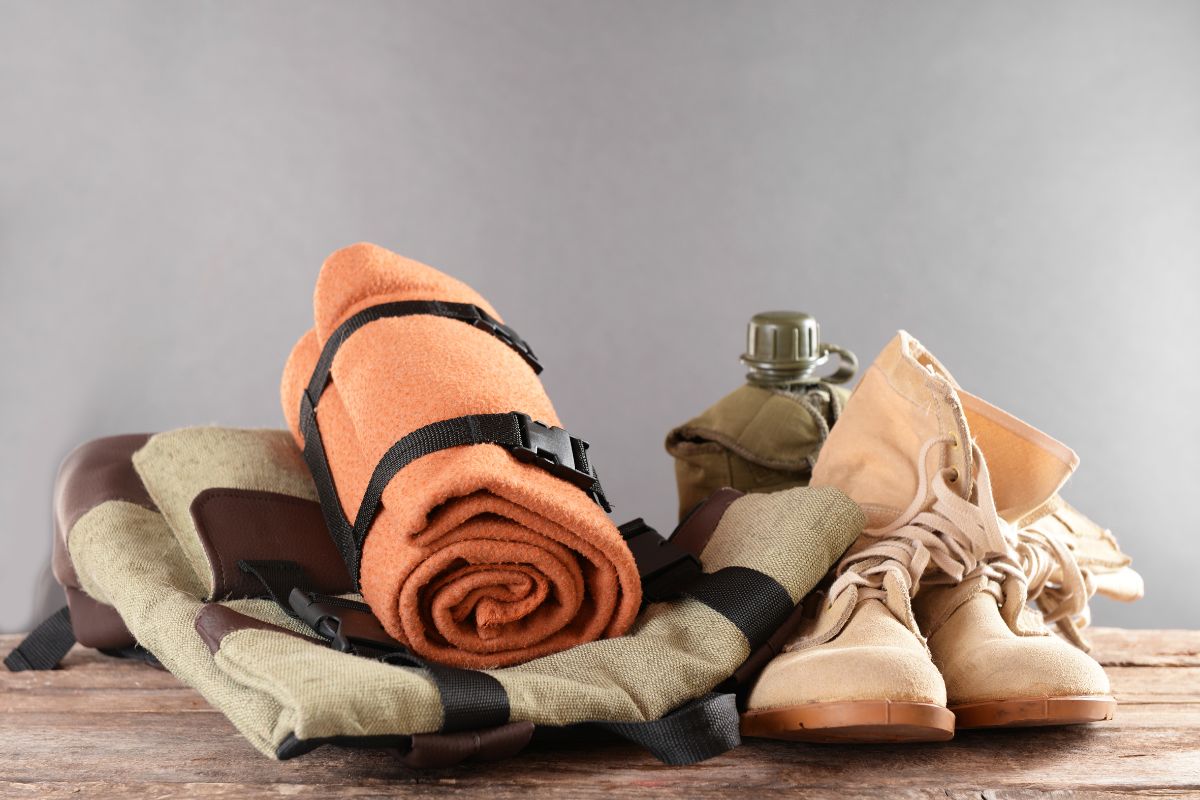How to Wear a Hiking Backpack Correctly

I still remember the first time I hiked in the wilderness with my backpack on my back. It was as if the backpack had a mind of its own. When I trekked to the right, it swung to the left. Each uphill step became a personal battle between me and gravity. Afterwards, I read a lot of guides and came to realize that learning to wear a trekking backpack correctly is a process in itself.
Adjusting your backpack may seem simple, but it actually requires attention to a variety of details, including understanding your body’s needs. This guide on how to wear a hiking backpack correctly is a collection of insights I’ve gained through trial and error on my hiking trips, so keep reading now and let’s make sure your next hiking trip goes off without a hitch.
RELATED: How to Pack a Hiking Backpack
RELATED: What to Pack In a Hiking Backpack

I. Purchasing a Backpack that Fits Your Body Type
When shopping for a backpack, it might be worth considering heading to a specialty store. These stores typically have well-trained sales associates who can properly measure your body and recommend the most suitable backpack for you.
However, if you opt for online shopping, you’ll need to ensure you have the correct torso size. You might need the help of a friend to assist you with measurements. The measurement starts from the top of your hip bone, known as the iliac crest, to the bottom of your C7 vertebra (base of your neck). To locate the C7 vertebra, simply look straight ahead and feel for the most prominent bone. This measurement can help you determine the required backpack size.
Remember, the key to a comfortable backpack choice lies in the appropriate torso length, not just your height. A proper backpack should rest comfortably on your hips, with most of the weight supported by your lower body rather than your shoulders. Therefore, investing some time in finding the right backpack is essential, as it will result in a different level of comfort for your next adventure.

II. Basic tips for adjusting your backpack
Ensuring a proper fit for your backpack is crucial before embarking on any adventure. This is because correctly adjusting the backpack is the key to ensuring that every part fits snugly and comfortably against your body.
Starting Adjustments at the Hip Belt
When adjusting your backpack, start with the hip belt. This part is crucial because it carries most of the weight. All you need to do is ensure the hip belt sits snugly just above your hips. It should feel comfortably tight, but not too tight to restrict movement or feel uncomfortable.
Proper Positioning and Tightness of Shoulder Straps
After adjusting the hip belt, it’s time to focus on the shoulder straps. These are very important because they help evenly distribute the weight of your backpack. Make sure the shoulder straps fit snugly against your shoulders, but still give you enough room to move comfortably and allow for good circulation. Ideally, the anchor points of the shoulder straps should sit about one to two inches below the top of your shoulders. This ensures that the weight is evenly distributed and helps prevent any discomfort during your hike.
Adjusting the Chest Strap and Load Lifters
Now, let’s talk about the sternum strap. The sternum strap plays a role in keeping the backpack stable and ensuring weight is evenly distributed across the chest. Fasten it at a comfortable height, typically in the middle of your chest. At the same time, you also want to ensure it’s snug enough, meaning it secures the shoulder straps without making it difficult for you to breathe.
Another area to pay attention to is the load lifters. These are the straps that connect the top of the backpack to the shoulder straps. When adjusted correctly, they should form a 45-degree angle between the shoulder straps and the backpack. This angle helps to bring the load closer to your body, preventing excessive swinging while hiking.
Techniques for Using Load Lifter Straps
When it comes to using the load lifter straps, Here’s the trick: before putting on your backpack, make sure to loosen the straps a bit. Then, once you’ve got your pack on, tighten them just enough to pull the weight of the pack closer to your body. You don’t want to overdo it, though—overtightening can actually make the backpack lift away from your back, which kind of defeats the whole purpose of adjusting them in the first place.
Oh yeah, and don’t forget the compression straps! These little guys can help stabilize your load even more, making sure your backpack stays comfortable throughout your journey. Be sure to adjust them if you notice any shifting while you’re on the trail.
Step by Step Guide to Adjusting a Backpack Before Hiking
With the above highlights addressed, here’s the complete step-by-step process; follow these steps to start making adjustments:
-
Start by loosening all the straps—yes, every single one of them, including those on the shoulder harness and hip belt. You want to make sure they’re fully extended and ready to go.
-
Slip on the backpack, and gently tug on the shoulder straps so that the hip belt sits just below your hip bones. It should be snug but not so tight that it’s uncomfortable.
-
Lift your shoulders a bit, then fasten the hip belt around your waist. Make sure it’s positioned just right—not too high or too low.
-
Gradually tighten the shoulder straps. This will help position the hip belt correctly and distribute the weight of the backpack evenly.
-
Adjust the hip belt so that the padding sits evenly, with about half above and half below your hip crest. It should fit snugly around the top of your hip bones without riding too high.
-
Fasten the hip belt securely, but not so tight that it’s uncomfortable. At this point, most of the weight of the backpack should be supported by your hips.
-
Pull the shoulder straps snug, shifting a bit of the weight—about 5 to 15 percent—from your hips. This slight adjustment can help relieve some pressure without sacrificing comfort.
-
Locate the load lifter straps situated at the top of the shoulder straps, near where they connect to the pack. Tug these straps forward, and you’ll notice the backpack rise slightly and settle closer against your back.
-
If your backpack has stabilizer straps on the hip belt, give those a tug too. This will draw the lower part of the pack inwards, adding even more stability and balance as you move.

III. How to Pack a Hiking Backpack Correctly
Proper weight distribution of your pack’s contents and gear, along with strategic packing, can make it easier to carry your pack.
Principles of Weight Distribution
To keep your backpack stable while making it easy to move around, follow the principles of weight distribution.
First, place heavier items in the center of your pack, near your back. And place these items at a height between your shoulder blades – making sure the center of gravity is in the right place.
Second, for lighter items, place them on the top and outer edges of the pack. This will effectively prevent and forestall excessive swaying while hiking.
Finally, if your pack has side pockets, they are perfect for items you need to access frequently. Just be sure to distribute the weight evenly on both sides so that you can avoid straining and maintain your balance while walking.
Packing Order and Tips
When packing your backpack, it’s important to follow a bottom-up approach. Here’s the breakdown:
- Start from the bottom: This is where you’ll place lighter, bulkier items like your sleeping bag or spare clothing, as you may not need these items until you set up camp. The logic behind placing them at the bottom is to make it easier to balance the weight of your backpack.
- Next is the core layer: This is where you’ll pack the heaviest items, such as your food supplies or camping stove. Place them close to your back, as the arrangement of these items can significantly affect your posture and comfort, so take some time to arrange them correctly.
- Lastly, the top layer: This is where you’ll stash items you need easy access to, like rain gear or a first aid kit. By placing them on top, you won’t have to rummage through everything when you need them the most.
Remember, packing your backpack this way not only helps evenly distribute weight but also keeps everything organized and easy to find.
IV. How to Adjust Your Backpack While Hiking
It is a known fact that backpacks must be adjusted frequently as the body and load will continue to change throughout the hike.
Lean Forward
When you’re adjusting your backpack, try leaning forward just a little bit. This helps relieve some pressure and allows the straps to move more freely. Plus, it makes it easier to shift the load around and make sure the weight stays evenly distributed.
Tips for Avoid Load Fatigue
- Shoulder Straps: Keep the straps snug without letting them dig into your shoulders.
- Hip Belt: Make sure about 80% of the weight of the pack is resting on your hips. Secure the belt just above your hip bones.
- Load Lifters: Adjust them so they hold the pack close to your body, creating a 45-degree angle.
Planning Rest Periods
When hiking outdoors, it’s important not to wait until you’re completely exhausted to take a break, but rather to rest before reaching that point. During these breaks, it’s a good time to check your backpack to ensure it’s still comfortable and fitting well. Here are a few things you can do during your breaks:
- Replenish fluids and energy: Take some time to hydrate, snack, and keep your body energized for the upcoming trails ahead.
- Inspect the straps: Check for any signs of slipping or rubbing on uncomfortable spots with the shoulder straps. If necessary, make adjustments to ensure everything feels just right.
- Listen to your body: Pay attention to any discomfort the backpack might be causing. If there’s any discomfort, take the time to readjust to ensure comfort before continuing your hike.
By making these adjustments regularly, you can spread the weight out evenly and make your hike a whole lot more comfortable. Trust me, your back will thank you for it!
V. Recognizing Signs of Discomfort
It’s important to pay attention to your body while you’re hiking, especially when it comes to any signs of discomfort. Here are a few things to look out for:
- Shoulder Pain: If you start to feel pressure or pain on your shoulders, it could be a sign that the weight of your backpack isn’t being distributed properly. Take a moment to adjust the straps and make sure the weight is evenly balanced.
- Back Ache: A dull ache in your back can be a sign that your backpack isn’t adjusted correctly. Try readjusting the straps and hip belt to see if that helps relieve the discomfort.
- Neck Strain: If you’re experiencing strain in your neck, it could mean that your backpack is sitting too high or that the straps are uneven. Take a moment to adjust the height and tightness of the straps to see if that helps.
If you notice any of these signs of discomfort while you’re hiking, don’t hesitate to stop and make adjustments.
VI. Frequently Asked Questions
1. Are hiking backpacks waterproof?
While most hiking backpacks are made from water-resistant materials, they’re not entirely waterproof. To give your gear extra protection during heavy rain or water crossings, it’s a good idea to use a rain cover or pack your items in dry bags.
2. How to pack hiking boots in a backpack?
To keep your hiking boots separate from your other gear and to manage weight distribution, consider placing them in a separate compartment if your backpack has one. If not, using a shoe bag or wrapping them in a plastic bag can help. Secure them at the bottom of your pack to keep everything clean and organized.
3. Are hiking backpacks allowed as carry-on?
Yes, you can often use a hiking backpack as carry-on luggage as long as it meets the airline’s size restrictions. Make sure to check with your airline for specific dimensions to avoid having to check your backpack at the gate.
4. Where is the ideal position for a backpack to rest on my hips?
For optimal comfort and weight distribution, the hip belt of your backpack should rest on your iliac crest—the top part of your hip bones. This positioning helps to evenly distribute the weight of the pack and reduces strain on your shoulders.
5. How can I determine the appropriate backpack size for my body type?
To find the perfect fit, measure your torso length and hip width. Most backpack brands offer various sizes and have adjustable systems to customize the fit. Make sure the backpack sits snugly against your back and that the hip belt sits comfortably on your hips for a comfortable hike.

0 Comments